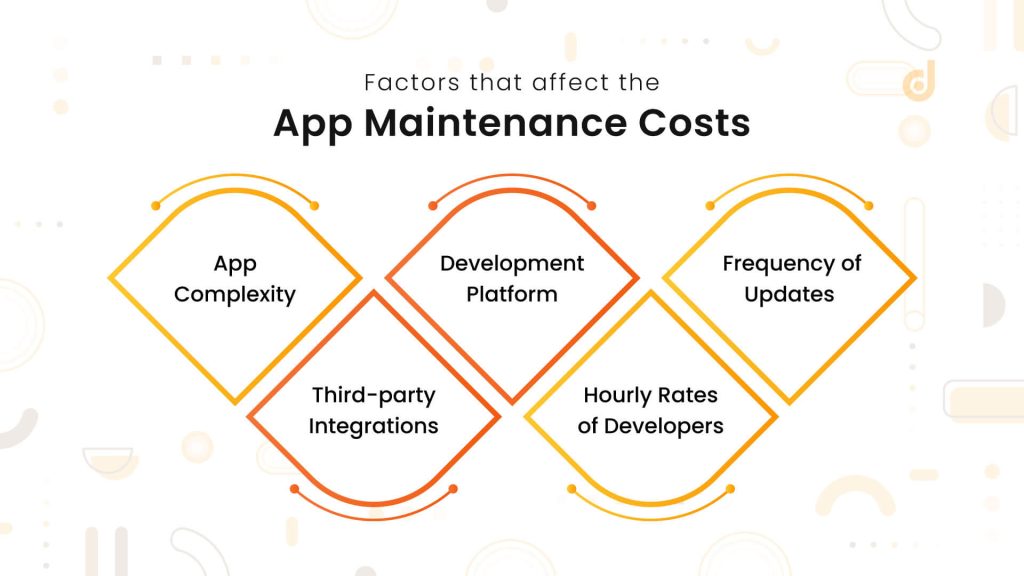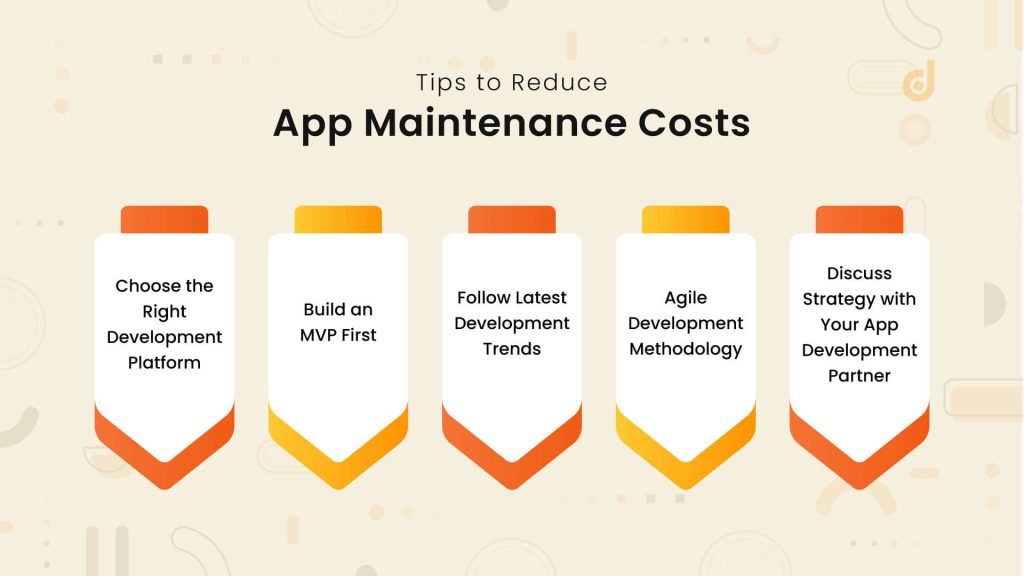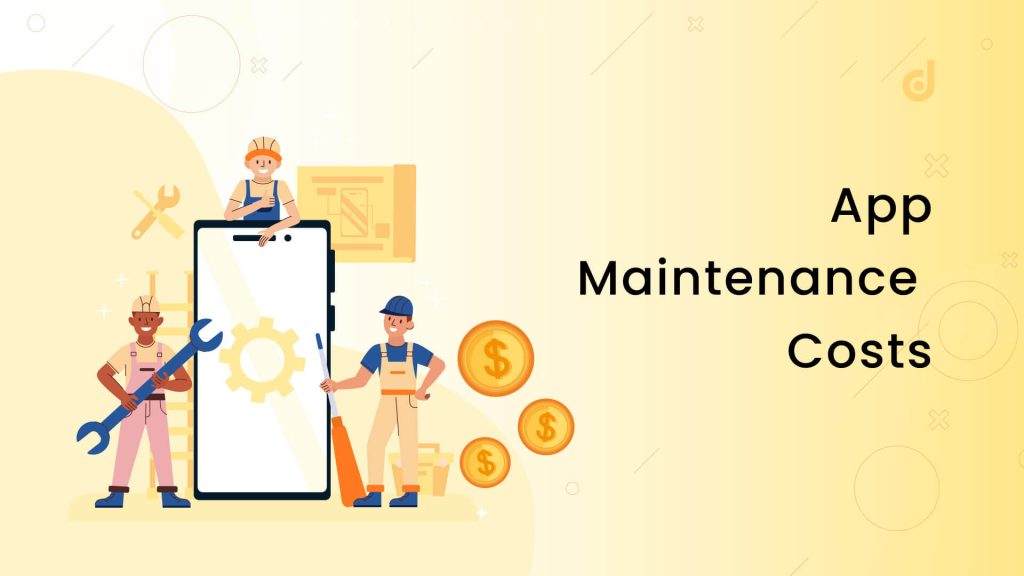In today’s competitive mobile landscape, a well-maintained app is no longer a luxury – it’s a necessity. Just like a car needs regular tune-ups to run smoothly, your app requires ongoing maintenance to ensure optimal performance, security, and user satisfaction. But navigating the world of mobile app maintenance costs can be daunting, especially for startups. Here’s the good news: with the right approach, you can effectively manage these costs and keep your app thriving.
Statistics show that ongoing app maintenance costs typically range from 15% to 20% of the initial development cost annually. This means that for a $50,000 app development project, you can expect to budget around $7,500 to $10,000 per year for maintenance. While this might seem like a significant expense, neglecting maintenance can lead to far costlier consequences down the line.
This guide will equip you with the knowledge to understand the factors that influence the cost of maintaining an app. We’ll explore different maintenance tasks, delve into cost-saving strategies, and ultimately empower you to make informed decisions that keep your app running smoothly and your budget in check.
What is Application Maintenance?
App maintenance is an ongoing process of keeping your mobile app functional, secure, and optimized after its initial development. It encompasses a wide range of activities, including, bug fixing, performance optimization, security & platform updates, new feature integration, etc. This ensures a positive user experience and avoids potential issues down the line that could lead to higher ongoing app maintenance costs.
By investing in mobile app maintenance, you can minimize the risk of problems arising and keep your app predictable in the long run.
Why is App Maintenance so Important?
In the competitive world of mobile apps, neglecting app maintenance can be a recipe for disaster. Here’s why prioritizing ongoing maintenance is crucial for your app’s success:
1. Ensures a Flawless User Experience
Bugs, crashes, and slow loading times can quickly frustrate users and lead to negative reviews and app abandonment. Regular maintenance keeps your app running smoothly, delivering a positive user experience that keeps them engaged.
2. Protects Your Brand Reputation
Security vulnerabilities in an unmaintained app can expose user data and damage your brand’s reputation. Regular security updates are essential to safeguard your users’ trust and protect your brand image. A data breach can not only damage your reputation but also lead to hefty fines and legal repercussions.
3. Maintains App Relevance
Technology is constantly evolving, and user expectations change rapidly. Ongoing app maintenance costs allow you to adapt your app to the latest trends and integrate new features based on user feedback. This keeps your app relevant and competitive in the ever-changing app store landscape.
4. Boosts App Store Ranking
App stores prioritize apps that deliver a positive user experience and are regularly updated. Consistent maintenance ensures your app functions flawlessly and receives positive reviews, potentially boosting your ranking in search results and attracting new users organically.
5. Saves You Money in the Long Run
While mobile app maintenance costs may seem like an ongoing expense, they are significantly cheaper than dealing with the consequences of neglect. By preventing app crashes, security breaches, and user churn, you save money in the long run and ensure the continued success of your app.
6. Maintains Compatibility with New Devices
As new mobile devices and operating systems are released, apps need to adapt to remain functional. Maintenance ensures timely updates to keep your app compatible and accessible to a wider audience.
Types of App Maintenance
The world of app maintenance can seem complex, but it can be broken down into several key categories. Understanding these different types will help you determine the most effective and cost-efficient approach for your specific app.

1. Emergency Maintenance
It involves addressing critical issues that immediately impact app functionality, such as major bugs or security vulnerabilities. Emergency fixes are typically unplanned and can significantly impact mobile app maintenance costs due to the urgency involved.
2. Preventive Maintenance
It involves regular checkups and tune-ups to identify and address potential problems before they snowball into major issues. This includes tasks like performance monitoring, security updates, and routine bug fixes. By preventing problems before they arise, preventive maintenance helps keep ongoing app maintenance costs predictable and manageable.
3. Adaptive Maintenance
Adaptive maintenance focuses on keeping your app compatible with the latest operating systems (like new Android or iOS versions) and adapting features based on user feedback or changing market trends. This ensures your app remains relevant and competitive in the long run.
4. Corrective Maintenance
This involves fixing existing bugs and errors that have been identified by users or through internal testing. While some bug fixes might be addressed during preventive maintenance, corrective maintenance focuses on resolving specific issues reported by users that are impacting functionality.
5. Perfective Maintenance
This category goes beyond basic functionality and focuses on enhancing the user experience by adding new features or improving existing ones. While not strictly essential for maintenance, some app development partners may offer perfective maintenance as part of a comprehensive package. The decision to invest in perfective maintenance depends on your specific goals and budget.
Essential Parts of App Maintenance
Now that we’ve explored the different types of app maintenance, let’s delve into the core tasks that make up ongoing app maintenance. These essential activities are crucial for ensuring your app functions optimally and deliver a positive user experience:
1. Technical Maintenance
This is the backbone of keeping your app running smoothly. It encompasses tasks like:
- Bug Fixing: Identifying and resolving any bugs or glitches that may hinder user experience.
- Platform Updates: Regularly updating your app to ensure compatibility with the latest versions of Android, iOS, or other relevant operating systems. This prevents compatibility issues and keeps your app functioning flawlessly.
- Performance Monitoring: Continuously monitoring your app’s performance metrics to identify areas for improvement. This can involve tracking loading times, resource usage, and overall app responsiveness. By proactively addressing performance bottlenecks, you ensure a smooth and enjoyable user experience.
2. User-centric Maintenance
Your users are the heart of your app’s success. This type of maintenance focuses on keeping your app user-friendly and engaging:
- User Feedback Analysis: Regularly gathering and analyzing user feedback helps you identify areas for improvement and understand user needs. This feedback can be collected through app store reviews, surveys, or in-app feedback mechanisms. By incorporating valuable user insights, you can refine your app and keep users engaged.
- UI/UX Improvements: Based on user feedback and industry trends, you may need to make adjustments to your app’s user interface (UI) and user experience (UX). This could involve improving navigation, simplifying workflows, or making the overall design more visually appealing. Investing in UI/UX improvements can significantly enhance user satisfaction and retention.
3. Security Maintenance
- Regular Security Updates: Implementing the latest security patches and updates provided by your app development platform or third-party integrations. This helps safeguard your app from vulnerabilities and cyberattacks.
- Vulnerability Scanning: Regularly conducting vulnerability scans to identify any potential security weaknesses in your app. By proactively addressing these vulnerabilities, you can minimize the risk of data breaches and protect user information.
By consistently addressing these essential aspects of app maintenance, you ensure your app remains secure, and user-friendly, and delivers a seamless experience that keeps users coming back for more.
Factors that Affect App Maintenance Costs
Understanding the factors that influence mobile app maintenance costs is crucial for any startup looking to optimize its budget and ensure long-term app success. Here are the key considerations:

1. App Complexity
Simple apps with basic functionalities typically require less maintenance compared to feature-rich apps with complex functionalities. The more intricate your app’s features, the more time and resources are required for maintenance, potentially impacting the cost of maintaining an app.
2. Development Platform
There are two primary development approaches: native (developed for a specific platform like Android or iOS) and cross-platform (developed using a single codebase for multiple platforms). While native apps offer optimal performance, they often require separate maintenance teams for each platform, potentially increasing mobile app maintenance costs. Cross-platform apps can be more cost-effective in terms of maintenance as a single codebase needs managing.
3. Frequency of Updates
The frequency of updates you plan for your app can significantly impact ongoing app maintenance costs. Regular updates with new features or bug fixes will naturally require more development resources compared to infrequent updates focusing solely on maintenance tasks. Finding a balance between keeping your app updated and managing costs is essential.
4. Third-party Integrations
Integrating third-party services or libraries into your app can enhance functionality but also introduce additional maintenance considerations. These integrations may require ongoing updates and compatibility checks, potentially adding to the cost of maintaining an app. Carefully evaluate the necessity of third-party integrations and weigh the benefits against the potential maintenance overhead.
5. Hourly Rates of Developers
The location of your development team can influence app maintenance costs. Developers in certain regions may have different hourly rates compared to others. While outsourcing development to regions with lower rates can be cost-effective, consider factors like communication, expertise, and time zone differences when making this decision.
Tips to Reduce App Maintenance Costs
Keeping your app running smoothly doesn’t have to break the bank. Here are some practical strategies you can implement to minimize app maintenance costs and maximize your budget:

1. Choose the Right Development Platform
As discussed earlier, selecting the right development platform can significantly impact ongoing app maintenance costs. For startups, cross-platform development can be a cost-effective option. By using a single codebase for both Android and iOS, you can potentially reduce maintenance efforts and associated costs compared to maintaining separate native apps.
2. Build an MVP First
An MVP (Minimum Viable Product) is a lean version of your app with core functionalities. Building an MVP allows you to test the core concept with real users and gather valuable feedback before investing heavily in complex features. This iterative approach helps identify and address potential issues early on, potentially reducing the need for extensive maintenance down the line.
3. Follow Latest Development Trends
Staying up-to-date with the latest development trends and best practices can help you write cleaner, more efficient code. This not only improves your app’s performance but also makes it easier to maintain in the long run. Investing in developer training or partnering with a development team experienced in modern development practices can benefit you in the long run by reducing mobile app maintenance costs.
4. Agile Development Methodology
The Agile development methodology promotes iterative development cycles with continuous testing and feedback loops. This allows you to identify and fix bugs early on in the development process, preventing them from becoming larger issues requiring expensive fixes later during app maintenance.
5. Discuss Strategy with Your App Development Partner
A skilled app development partner can be a valuable asset in managing app maintenance costs. Discuss your budget and maintenance goals with your development team. They can recommend strategies like code optimization or prioritizing maintenance tasks to optimize your budget and ensure a smooth user experience.
By implementing these cost-saving strategies, you can effectively manage your ongoing app maintenance costs and ensure the long-term success of your app. Remember, investing in preventative maintenance now can significantly reduce the need for costly fixes down the road.
Conclusion
Navigating the world of app maintenance can be complex. By understanding the key factors that influence ongoing app maintenance costs and implementing the strategies outlined above, you can ensure your app thrives without breaking the bank.
At Digimonk Solutions, we’re passionate about helping startups succeed. Our experienced developers and focus on cost-effective maintenance solutions can help you keep your app running smoothly and optimize your budget for long-term success. Contact us today for a free consultation and let’s discuss how we can be your trusted partner in the world of app development and maintenance.

